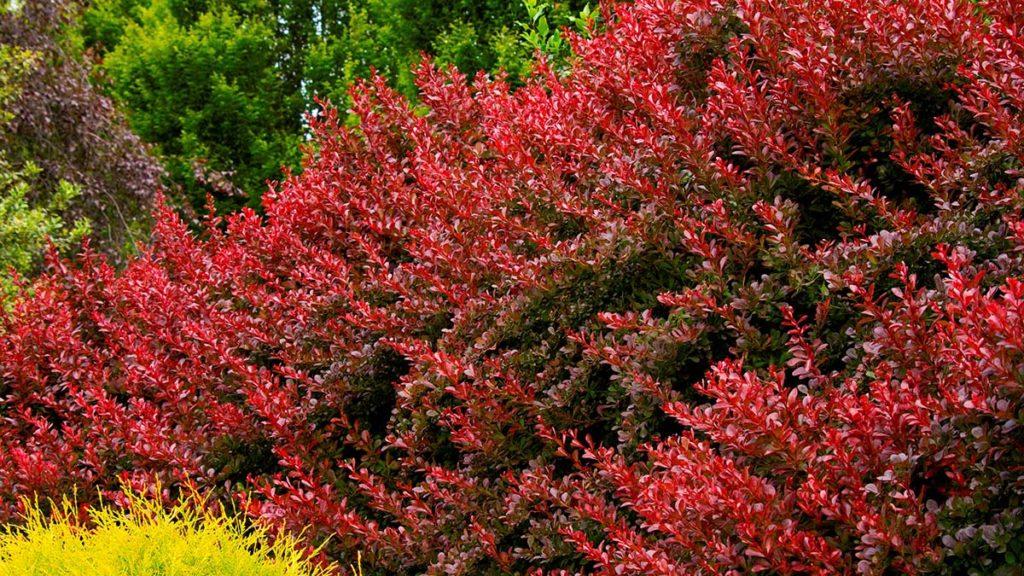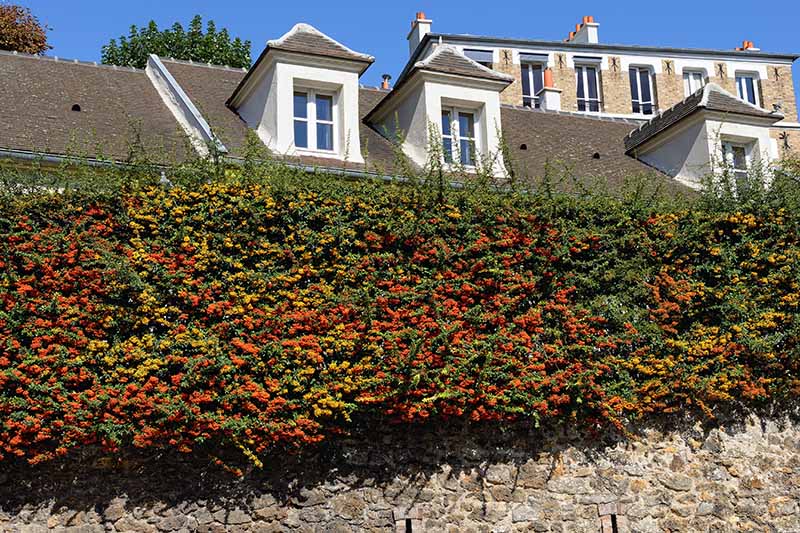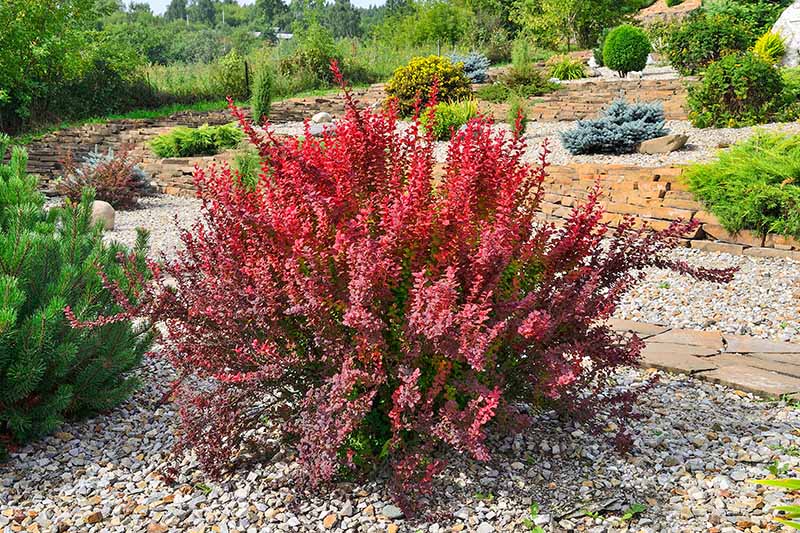Crimson Barberry: The Ultimate Guide To Planting Growing And Caring For This Beautiful Shrub
Crimson Barberry: The Ultimate Guide to Planting, Growing, and Caring for This Beautiful Shrub
Crimson barberry is a beautiful and versatile shrub that can add a touch of color and interest to any landscape. It is easy to care for and can tolerate a wide range of conditions, making it a good choice for gardeners of all skill levels.
In this blog post, we will provide an ultimate guide to planting, growing, and caring for crimson barberry. We will cover everything from choosing the right location and planting time to watering, pruning, and pest control. By the end of this post, you will be an expert on all things crimson barberry!
Introduction
Crimson barberry (Berberis thunbergii) is a deciduous shrub that is native to East Asia. It is characterized by its bright red foliage, which turns yellow in the fall. Crimson barberry can grow to be 3-6 feet tall and wide, and it has a spreading, mounded habit. The leaves are oval-shaped and have sharp spines along the edges. The flowers are small and yellow, and they bloom in the spring. The fruits are red berries that ripen in the fall.
Crimson barberry is a popular landscape plant because it is easy to care for and can tolerate a wide range of conditions. It is drought-tolerant and can withstand hot, dry summers. It is also relatively pest- and disease-resistant.
Choosing the Right Location
Crimson barberry can be grown in full sun or partial shade. However, it will produce the brightest foliage in full sun. The soil should be well-drained and slightly acidic. Crimson barberry is not tolerant of wet, soggy soil.
Planting Time
The best time to plant crimson barberry is in the spring or fall. If you are planting in the spring, wait until the soil has warmed up to at least 60 degrees Fahrenheit. If you are planting in the fall, plant at least six weeks before the first frost.
Planting Procedure
Dig a hole that is twice as wide and as deep as the root ball of the crimson barberry shrub. Amend the soil with compost or other organic matter. Place the shrub in the hole and backfill with soil. Water the shrub thoroughly.
Watering
Crimson barberry is drought-tolerant once it is established. However, it is important to water the shrub regularly during the first year after planting. Water the shrub deeply once a week, or more often if the weather is hot and dry.
Pruning
Crimson barberry does not require a lot of pruning. However, you may want to trim it back in the spring to remove any dead or damaged branches. You can also prune it to shape it or keep it in check.
Fertilizing
Crimson barberry does not need to be fertilized often. A light application of fertilizer in the spring will help it to thrive. You can use a balanced fertilizer, such as 10-10-10.
Pest Control
Crimson barberry is relatively pest- and disease-resistant. However, it can be susceptible to aphids, scale, and powdery mildew. If you see any pests or diseases, treat them immediately with an appropriate insecticide or fungicide.
Conclusion
Crimson barberry is a beautiful and versatile shrub that can add a touch of color and interest to any landscape. It is easy to care for and can tolerate a wide range of conditions, making it a good choice for gardeners of all skill levels. By following the tips in this blog post, you can enjoy your crimson barberry for many years to come.
Crimson barberry is a beautiful and versatile shrub that can add a touch of color to any landscape. It is known for its dark red foliage, which turns a brilliant orange in the fall. Crimson barberry is also relatively easy to care for and can tolerate a wide range of conditions.
If you are interested in learning more about crimson barberry, please visit Home Gardening. This website provides comprehensive information on all aspects of growing and caring for this plant, including planting, watering, pruning, and pest control. You can also find photos and videos of crimson barberry in different stages of growth.
FAQ of crimson barberry
- What is crimson barberry?
Crimson barberry (Berberis thunbergii) is a deciduous shrub that is native to Asia. It is known for its bright red foliage, which turns yellow in the fall. Crimson barberry can grow up to 6 feet tall and wide, and it has sharp thorns that can be a hazard.
- How to grow crimson barberry?
Crimson barberry is a relatively easy plant to grow. It prefers full sun and well-drained soil. It is drought-tolerant once established, but it should be watered regularly during the first year after planting. Crimson barberry is not fussy about fertilizer, but a light application of fertilizer in the spring will help it to thrive.
- How to care for crimson barberry?
Crimson barberry does not require a lot of care. It should be pruned in the spring to remove dead, damaged, or diseased branches. It may also need to be pruned to control its size. Crimson barberry is relatively pest- and disease-resistant, but it may be susceptible to scale insects and powdery mildew.
- Is crimson barberry invasive?
Some varieties of barberry, including crimson barberry, are considered invasive in some parts of the United States. This means that they can spread rapidly and outcompete native plants. If you are considering planting crimson barberry, it is important to check with your local nursery or garden center to see if it is an invasive species in your area.
- How to start a crimson barberry bush?
Crimson barberry can be propagated from seeds, cuttings, or root division. The easiest way to start a new bush is from a cutting. To do this, take a 6-inch cutting from a healthy plant in the spring or summer. Remove the lower leaves from the cutting and dip the cut end in rooting hormone. Plant the cutting in a pot of moist potting mix and place it in a warm, sunny location. The cutting should root in about 4-6 weeks.
Image of crimson barberry
10 free images of crimson barberry:
- A close-up of a single crimson barberry flower. The flower is small and yellow, with a dark crimson center.

- A row of crimson barberry bushes in full bloom. The bushes are covered in bright crimson flowers, which contrast beautifully with the dark green leaves.

- A crimson barberry bush with its leaves changing color in the fall. The leaves are a mix of red, orange, and yellow, and they provide a beautiful display of fall foliage.

- A crimson barberry bush with its berries in the winter. The berries are a deep red color, and they provide a splash of color in the winter landscape.

- A crimson barberry bush in a garden setting. The bush is surrounded by other plants, including flowers, shrubs, and trees.

- A crimson barberry bush as a hedgerow. The bush is trimmed into a neat hedgerow, which provides privacy and security.

- A crimson barberry bush as a windbreak. The bush is planted in a row to act as a windbreak, protecting other plants from the wind.

- A crimson barberry bush as a specimen plant. The bush is planted as a standalone specimen plant, and it is the focal point of the garden.

- A crimson barberry bush as a bonsai tree. The bush has been trained to grow into a small bonsai tree, which is a popular ornamental plant.

- A crimson barberry bush as a food source for birds. The berries are a popular food source for birds, and they help to attract birds to the garden.

Post a Comment for "Crimson Barberry: The Ultimate Guide To Planting Growing And Caring For This Beautiful Shrub"